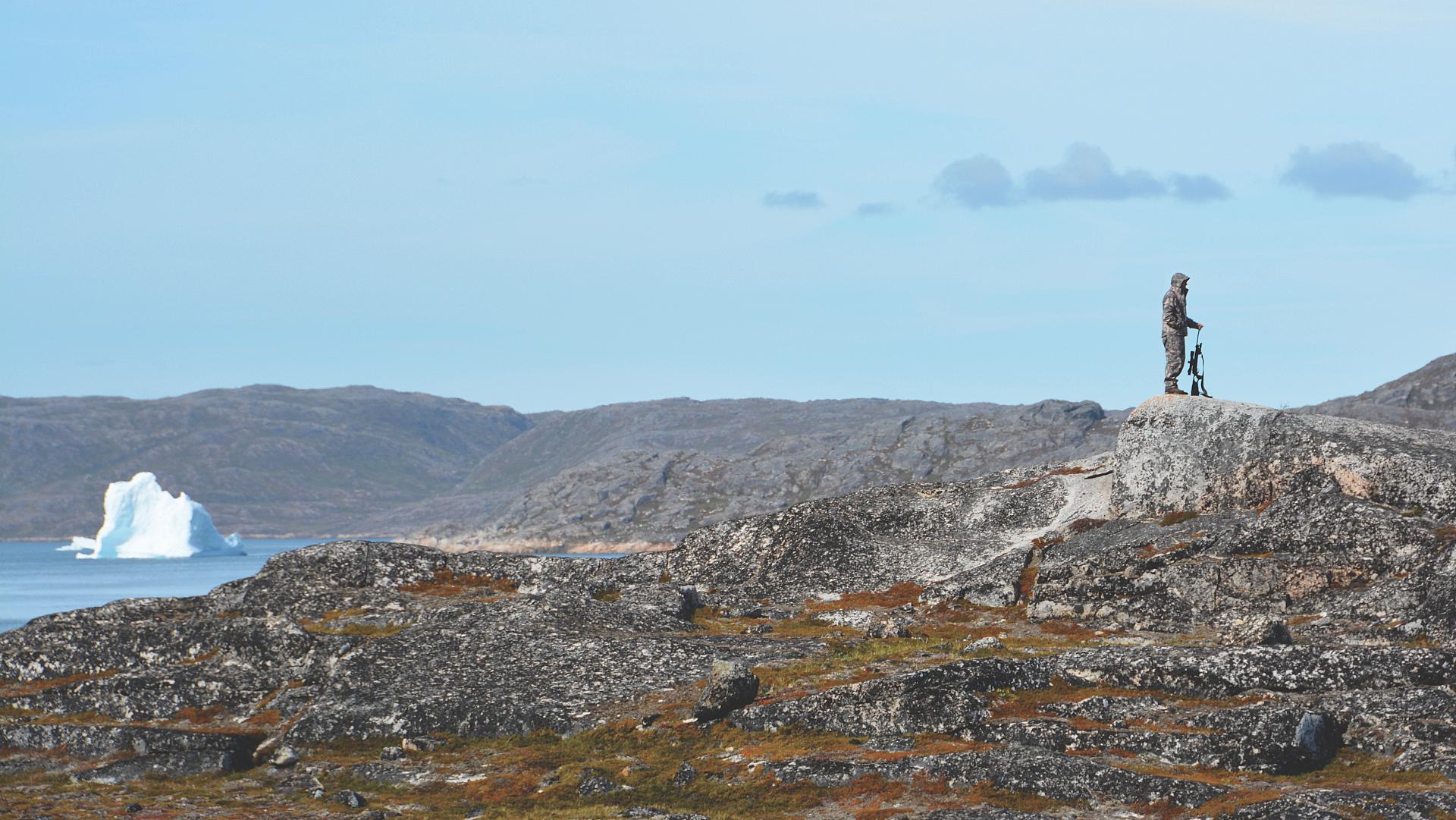Where Vikings roamed
Amid the dramatic landscapes of Greenland and Iceland, opportunity awaits the intrepid angler and hunter
Advertisement
The weather was deteriorating as we boated from Narsarsuaq Airport to the caribou camp on Imartuneq Bay, but the drizzle did little to hide Greenland’s natural beauty. From a distance, the verdant shores appeared muted, as if hiding behind a watercolour wash, but whenever we neared the steep cliffs, a multitude of vibrant green hues emerged. Around us, the foamed sea was pockmarked with white and deep cerulean blue icebergs, some small and posing little threat, while others were the size of office buildings. Despite the gusting winds, I stood outside the shelter of the boat’s cabin, awestruck by the sheer magnitude of the stark and colourful landscape.
Perched on the rocky shores at the end of a protected bay, the caribou camp soon came into sight. It was reminiscent of most remote Arctic camps I’ve visited—a dozen wooden cabins formed a semicircle around the main lodge, each cabin featuring two beds, electric lighting and an electric heater. Washroom facilities, including hot showers and a sauna, were housed separately.
Advertisement
With the three-hour boat ride behind me, I was ready to get up and move. After a quick coffee to reheat my boiler room, I was introduced to Michelle Staaf, a spirited young woman and one of the three guides in camp. In remote locations, where tragic consequences are but a misstep away, qualified camp leadership is crucial. It was clear these were professionals, all having attended the same guide school in Sweden. The fact they were half my age inspired confidence rather than concern.
I spent the first evening casting flies to Arctic char in the camp’s home waters, a 300-metre-long stream tumbling out of a small lake into the bay. Over an hour, I landed a half-dozen beautifully coloured char in the two- to three-pound class, all on pink or orange streamers and dries. Michelle described the fishing as slow, though I thought the pace was perfect for unwinding after a long day of travel—and a great way to ease into a full week of fishing and hunting in the fabled realm of the Vikings (below).
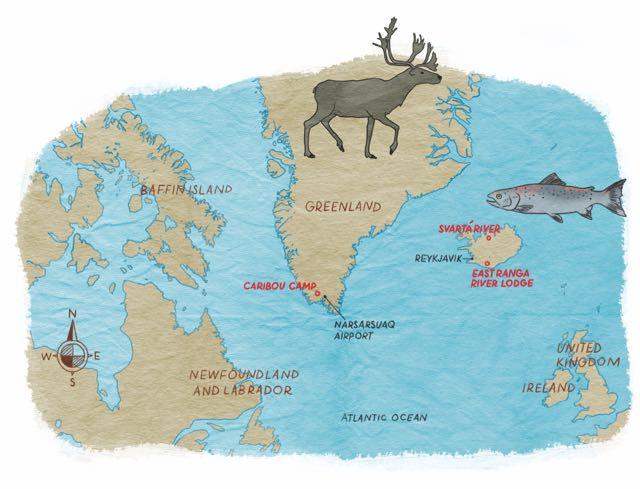
The caribou hunting began in the morning, as all guided hunts do, with sighting-in the rifles. Camp manager Simon Nilsson, who also serves as the chief hunting guide, showed me the rifle I’d be using, a Merkel Helix in .308 Norma Magnum, topped by a 1.5-10×42 Leica scope. I’m not much of a gearhead and normally wouldn’t comment, but this combination sent two clear messages. First, it reminded me that Greenland is more closely associated with Europe than North America, despite the fact its northwest coastline is only 30 kilometres or so from Canada’s Ellesmere Island. Second, it told me that the Iceland-based outfitter running the camp—Lax-Á—puts an emphasis on quality.
Advertisement
The world’s 12th-largest country, Greenland also boasts the planet’s lowest human population density, so you’d think there would be plenty of space for caribou to roam. When you consider the giant island is 80 per cent glacier averaging more than a kilometre and a half thick, however, it’s little wonder the caribou habitat is restricted to the ice-free coastlines and innumerable islands. The hunting strategy, therefore, is to cruise along, slowing down to glass each island. At one point, we passed the remnants of an abandoned Greenlandic Inuit community, a reminder of how difficult it must be to eke out an existence in this unvarnished land.
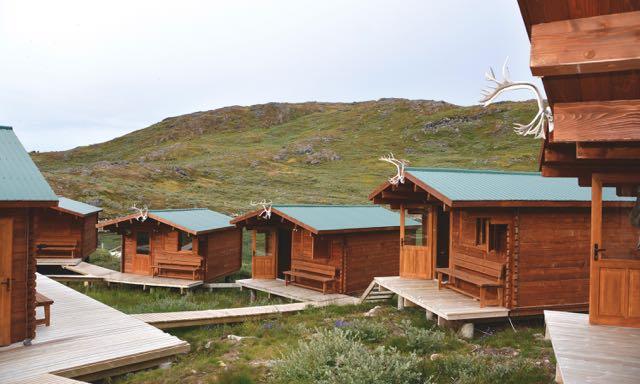
Caribou camp cabins.
Having spotted a dozen caribou on one island, we pulled in to see if there was a decent bull in the mix. Given the remoteness and lack of hunting pressure or natural predators, I was surprised at how nervous the animals were. Before we even showed our faces, they sensed something was amiss and trotted off with their noses into the wind. For 90 minutes we pursued them but couldn’t catch up, so we headed back to the boat.
The taxonomy of Greenland’s caribou is a bit sketchy. While there are native barren-ground caribou found in some parts of the country, there are also introductions from Norway’s semi-domesticated reindeer population in the mix. Frankly, the ancestry of the animals we were hunting mattered little to me—I wasn’t planning to qualify an animal for the record books, after all. And as far as I was concerned, a caribou hunt is a caribou hunt, as long as it involves fair chase.
My hunting companion, and first up for a chance at an animal, was Yuri, a Moscow businessman and avid hunter. Quiet though affable, Yuri spoke English with the stereotypical thick accent of every bad guy in a James Bond movie, but he proved to be a gentleman and a great comrade to hunt with. He got his caribou that first afternoon, a fine bull that we stalked to within 80 metres of after scrambling up a cliff that hid our approach. After cleaning the bull and skidding it back to the boat, we pressed on.
Motoring around an island, we heard their explosive exhaling before we noticed two feeding humpback whales, another indication of how cold and remote this country is. Taking advantage of the opportunity, we bobbed on the waves of the North Atlantic for nearly an hour, agog at the close-up spectacle of some of the world’s largest, though seldom seen, creatures.
Back at camp after our amazing first outing, I listened to stories of a 100-fish day from the angling guests, dined on Arctic char and ended the day on the lodge deck, watching the northern lights run wild in shimmers and streaks of emerald.
The following morning, it was my turn to tag out. We were glassing only the third island when we spotted a group of 15 animals, including what looked like three decent bulls. Immediately, we motored to the backside of the rocky island, beached and planned our approach.
After climbing to the highest point between the boat and where we believed the caribou were headed, we slowly crawled up to the edge of the precipice. Peering carefully over the top, we saw two bulls and two cows feeding undisturbed 100 metres below us. We had no idea where the other 11 caribou had gone, but one of the bulls was a good one, adorned with numerous top points and one shovel.
With the wind in our favour, I had plenty of time to settle in and shoot. As the bull dropped, and before the sound of the shot had even dissipated, the rest of the herd exploded into view—they’d been so tight to the rock face directly below us that we hadn’t seen them earlier.
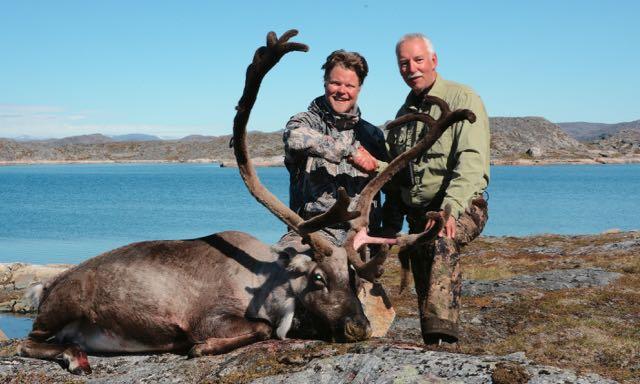
The author (right) with his caribou and guide Simon Nilsson.
On the cruise back to camp, I asked Simon to pull up to a 50-foot-tall iceberg so I could chip off some slabs of what may well have been 15,000-year-old ice. That evening, watching a repeat performance from the aurora borealis, I reflected on the day’s hunt and sipped my scotch, chilled Greenland style.
I fished the next two days. Near the outlet of one stream, the brilliantly hued char had congregated en masse, eager to move into their spawning water. I literally caught a fish with every cast. To cap off the angling, a few of us went cod jigging, landing a half-dozen fish weighing up to 12 pounds; they were a great hit around the dinner table that evening.
On the boat ride back to Narsarsuaq Airport, we stopped at the site of Eric the Red’s initial settlement, from around AD 984. The Vikings disappeared from Greenland in the late 1400s, though no one is quite sure why—perhaps they’d learned something about the country that just didn’t fit their lifestyle. As for me? Greenland suited me just fine, and I would have stayed longer, but I had a plane to catch to neighbouring Iceland—and three days of fly fishing for Atlantic salmon.
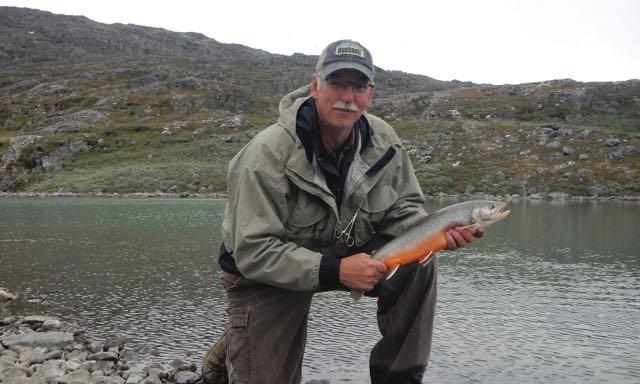
The author and an Arctic char.
In stark contrast to Greenland’s rugged and uninviting landscape, Iceland struck me as an enchanting land of refinement. The capital, Reykjavik, and the many towns through which we passed were modern, clean and quaint, while the countryside was a dichotomy of rolling green pastures and impassable lava deserts. What few wooded areas I saw were stunted by Canadian standards, and I was advised that if I got lost in one of these forests, all I had to do was stand up.
Travelling with me was Jóhann Ólafsson, Lax-Á’s director of marketing. It’s been said that Atlantics are the proverbial fish of a thousand casts, but Jóhann was determined to prove that simply wasn’t the case in Iceland. Our first stop was East Ranga River Lodge, a full-service destination that brought to mind the traditional European salmon fishing I’ve read about. It was first class all the way, from the individual gillies for each guest to the heated wader room to the five-star dining.
Unfortunately, the water was unseasonably high and cold, and the wind was up, so fishing was challenging and slow. Benefiting from his expertise with a 15-foot two-handed fly rod, Jóhann did manage to hook and land a small female on the second morning. While I had hits on two successive casts without a hook-up, all I got for my efforts was a hook buried deep in my finger that took the two of us 15 minutes, and no small amount of blood, to extract.
That afternoon, we drove four hours to Iceland’s north shore (apparently, you can drive around the entire island nation in 24 hours). Our destination was the picturesque Svartá River, often referred to as Iceland’s best-kept secret when it comes to salmon streams. Much of the upper section we’d be fishing was only 10 to 20 metres wide, making it considerably more accessible than the East Ranga for a one-handed caster such as myself.
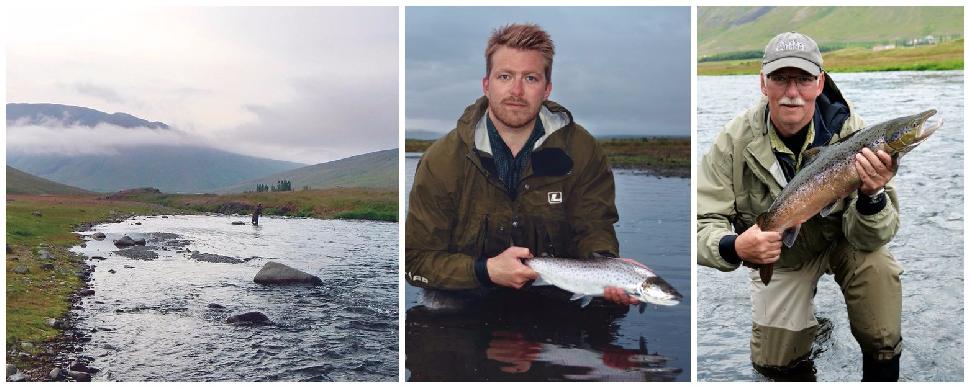
(Left to right) The idyllic Svartá River, Lax–Á’s Jóhann Ólafsson, and the author show off Atlantic salmon.
As with all of Iceland’s rivers, the Svartá is divided into named sections, or beats, and managed very carefully. Rod days are restricted and monitored, so Jóhann and I shared just one rod, meaning we couldn’t be in the water at the same time. That suited me just fine, as I’m much more comfortable fishing with another angler rather than under a guide’s constant direction. That’s not to say I didn’t welcome any advice I could get from Jóhann, who has all the characteristics of an excellent guide. And most importantly, he really wanted me to catch fish.
As quickly as we could get unpacked we were in the water, having opted for the do-it-yourself cabin rather than the full-service lodge so we could fish, eat and sleep on our own schedule. My spirits were buoyed when I hooked and successfully fought a beautiful chrome salmon in the first hour, but then dampened somewhat when the hook popped as I was attempting to beach the fish. Nonetheless, there’s nothing like fighting that first salmon to give you the confidence that there are more fish in the river—and that they can be enticed to bite.
The next morning, we awoke to clear and calm weather, a harbinger of what was to become the kind of day salmon anglers dream about. On only my sixth down-and-across cast, I hooked and landed a 25½-inch bright chrome hen that repeatedly cartwheeled across the pool before eventually succumbing. Then in the next pool I caught another silver beauty, this time a 27½-incher with a prominent kype.
Throughout the day, we continued to catch fish, some fighting in aerial combat mode, while others were more subdued but no less ferocious. My last fish was the biggest of the day, a hard-fighting male that I fooled with a #14 Collie Dog tube fly. By the time we had to reel in and call it a day, we’d landed nine salmon and lost a couple more. Fish of a thousand casts? As Jóhann had contended, not in Iceland.
Especially when the Norse gods of fishing are on your side.
Hunting editor Ken Bailey’s fishing and hunting adventures have also taken him to Africa and South America, and throughout North America.
DUE NORSE
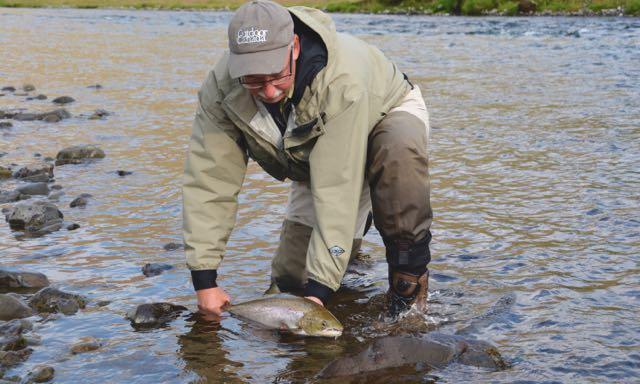
Internationally renowned Lax–Á is Iceland’s largest hunting and fishing outfitter, offering complete Greenland packages for caribou and muskox hunting, along with Arctic char fishing. In Iceland, angling for Atlantic salmon is the big attraction, although trout and char are also available, as arecaribou and waterfowl hunts. Icelandair offers direct flights from Halifax, Toronto, Edmonton and Vancouver to Reykjavik, Iceland, and from there to Narsarsuaq, Greenland.
Contact Lax–Á:www.lax-a.net. Contact Icelandair: www.icelandair.ca

